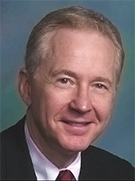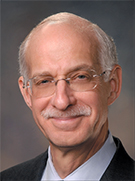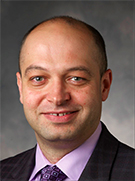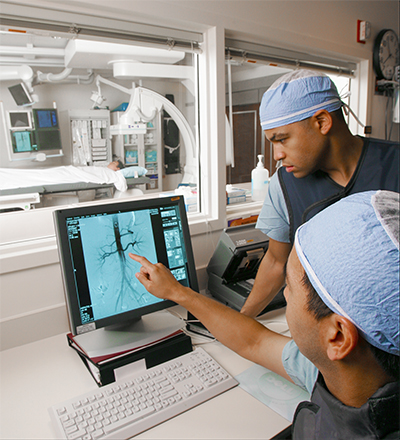Combined Residencies Energize Nuclear Medicine Job Outlook
Combined nuclear medicine/diagnostic residency programs are bolstering the job outlook for nuclear medicine residents



Nuclear medicine residents—particularly international medical graduates without diagnostic radiology training—continue to face a lack of opportunities on the job front, according to experts.
Although the issue is multifaceted, a key problem is that graduates whose background is in nuclear medicine only are becoming less attractive to radiology practices because they lack sufficient training in diagnostic radiology, said Milton J. Guiberteau, M.D., who assumes the presidency of the American Board of Radiology (ABR) on July 1, 2014.
“Candidates with both nuclear radiology/nuclear medicine and diagnostic radiology training are much more attractive to practices because they not only know nuclear medicine, they can also help cover night call, weekends and other areas of the practice,” said Dr. Guiberteau, chief of nuclear medicine and academic chief, Department of Medical Imaging, St. Joseph Medical Center, Houston, and a professor of radiology and nuclear medicine at Baylor College of Medicine, Texas Medical Center, Houston.
A 2013 survey of 54 nuclear medicine program directors published in the Journal of the American College of Radiology found that close to one-third of nuclear medicine graduates were not yet working in the field the first eight months after completing their programs. International nuclear medicine graduates fared the worst among all candidates, the survey showed.
One solution—establishing dual or combined nuclear medicine/diagnostic residency programs—is slowly beginning to gain traction. In 2010, ABR approved a program for diagnostic radiology residents that would ultimately lead to ABR certification in both diagnostic radiology and nuclear radiology. While the program is still in the early stages of implementation, some institutions—including Stanford University—are developing their own dual training pathways in diagnostic radiology and nuclear medicine/molecular imaging.
The market for graduates of nuclear medicine is so disheartening, in fact, “that there aren’t enough people going into nuclear medicine at the moment,” said Dr. Guiberteau, co-author of the JACR study.
ABR Dual Residency Program Breaking New Ground
Employment opportunities for nuclear medicine physicians have dropped off in recent years for a number of reasons. Many nuclear cardiology studies are now being read by cardiologists, further reducing demand for nuclear medicine physicians. Changing and decreasing physician reimbursement has been a factor and the uncertain economy has prompted many nuclear medicine physicians and radiologists to delay retirement, reducing the number of new job openings.
The problem has become so serious that the number of residents in nuclear medicine programs has been decreasing at a fairly rapid pace in recent years. There were approximately 112 at last count, according to Jay A. Harolds, M.D., co-author of the JACR study and the radiology residency director for Grand Rapids Medical Education Partners. Dr. Harolds is also a professor at Michigan State University and a member of Advanced Radiology Services. “The number of nuclear medicine residents reached 166 in the 2009-10 academic year, and began declining thereafter,” he said. Furthermore, the number of nuclear medicine residency programs have declined from 56 in 2009-10 to only 47 programs currently, and three more programs have given notice they will close soon, Dr. Harolds said.
While the traditional path to certification in both radiology and nuclear medicine/radiology has been four years of diagnostic radiology training plus a fellowship year in nuclear medicine, the 2010 accelerated pathway to ABR certification in diagnostic radiology and nuclear radiology “is breaking new ground,” Dr. Guiberteau said.
The ABR dual program requires that the sponsoring diagnostic radiology residency program be in an institution with Accreditation Council for Graduate Medical Education-accredited nuclear radiology fellowship and/or nuclear medicine programs. In addition, 16 months of nuclear medicine or nuclear radiology training is required within a 48-month diagnostic radiology residency. Ten of those 16 months must be consecutive to allow for continuity of patient care and a learning experience similar to a traditional fellowship.
Even though it was launched four years ago, the ABR program still needs more time to take hold in the radiology community, Dr. Guiberteau said. “We understand there are some departments intending to offer this dual program if they can overcome the logistical barriers involved in starting it,” he added.
For example, he said, “if you take residents out of the general clinical work pool and put them into nuclear medicine for 10 or 12 months, it removes them from other areas of academic practice where they can be useful in other subspecialties—so it will take careful planning to design programs that will work.”
Even with those logistical issues, “we do think this is innovative and will definitely help in two ways,” Dr. Guiberteau said. “One is that it has the potential to produce more radiologists with both diagnostic and nuclear medicine training who are sorely needed. And, of course, it will benefit patients who will have access to these radiologists.”
Stanford Offers Unique Dual Training Pathway
The Department of Radiology at Stanford University has followed its own path in developing a dual training pathway in diagnostic radiology and nuclear medicine/molecular imaging that differs from the ABR’s 16-month pathway to certification.
The introduction of combined imaging modalities like SPECT/CT, PET/CT and now PET/MR imaging in recent years has necessitated a change in training models, said Andrei Iagaru, M.D., an assistant professor of radiology and nuclear medicine program director at Stanford.
“Minimal exposure to the other type of training—either to diagnostic radiology or nuclear medicine—isn’t working,” Dr. Iagaru said. “From a workflow perspective, you’re going to need two people looking at the same scan—one looking at functional imaging and the other at anatomical imaging—and that’s something that can’t be sustained over the long term. We wanted to offer trainees who have a desire to combine functional and anatomical imaging the option to be certified by both the ABNM and ABR.”
After a preliminary year spent in internal medicine or surgery, residents in Stanford’s dual training pathway are required to spend a year under the umbrella of the nuclear medicine residency program and four years under the umbrella of the diagnostic radiology residency program (with the first three years including one month of nuclear medicine training each year and the fourth year dedicated to nuclear medicine and molecular imaging).
The extra time dedicated to nuclear medicine and molecular imaging makes the Stanford program unique. “Most diagnostic radiology programs are not set up to provide ample time for research because there is so much knowledge residents need to accumulate,” Dr. Iagaru said. “Our goal is to train the future generation of academic imaging specialists by allowing sufficient time to conduct research during these five years of dual training.”
Stanford has registered the dual training pathway with the National Residency Match Program, but getting to that point has been challenging, Dr. Iagaru said. Buy-in was needed from the diagnostic radiology and nuclear medicine departments, faculty and training programs, as well as the hospital administration.
“Then we needed to write to the ABNM and the ABR, describing the pathway, and getting confirmation that graduates would be eligible to take the Certification Examinations of both boards,” Dr. Iagaru said. “And it took a couple of years to arrive at a consensus as to how the program would be structured and even how it would be named.”
Challenges remain, Dr. Iagaru said. For example, clinical schedules will have to be adapted to account for changes in the training program. “We feel we’ve made a lot of progress, but it hasn’t been easy and we’re still not finished … nevertheless, we’re optimistic,” he said. “We’re happy with the outcome so far, and hope for a successful match next year.”
Ultimately, a combined residency pathway leading to dual ABR and ABNM certification may be necessary to ensure the supply of an adequate number of highly trained physicians in the specialty, Dr. Harolds said. “Such a pathway takes into account the needs of nuclear medicine practices, both academic and private, as well as the additional challenges inherent in the growth of molecular imaging as an integral part of nuclear medicine and diagnostic radiology,” he said.
